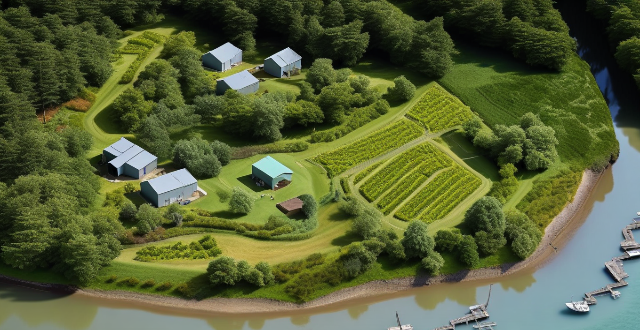The main causes of climate disasters are greenhouse gas emissions from burning fossil fuels, deforestation and land use changes, industrial processes and waste management, agricultural practices, and natural factors such as volcanic eruptions, solar radiation, and ocean currents. Human activities are the primary drivers of climate change, leading to more frequent and severe weather events like hurricanes, droughts, and floods. To mitigate these impacts, reducing greenhouse gas emissions through sustainable practices is essential, along with understanding and adapting to natural factors.

Main Causes of Climate Disasters
Climate disasters are extreme weather events that cause significant damage to human societies and the environment. These disasters can be caused by natural factors such as volcanic eruptions, solar radiation, and ocean currents, but they are also influenced by human activities. In this answer, we will focus on the main causes of climate disasters related to human activities.
1. Greenhouse Gas Emissions
The burning of fossil fuels (coal, oil, and natural gas) for energy production is the primary source of greenhouse gas emissions. These emissions trap heat in the Earth's atmosphere, leading to global warming and climate change. The increased temperatures can cause more frequent and severe weather events, such as hurricanes, droughts, and floods.
2. Deforestation and Land Use Changes
Deforestation and land use changes, such as urbanization and agriculture expansion, contribute to climate change by reducing the amount of carbon stored in trees and soils. This loss of carbon sinks leads to an increase in atmospheric carbon dioxide levels, which exacerbates global warming and its associated climate disasters.
3. Industrial Processes and Waste Management
Industrial processes, such as manufacturing and transportation, produce air pollutants that contribute to climate change. Additionally, waste management practices, including landfilling and incineration, release greenhouse gases into the atmosphere. These activities not only contribute to global warming but also have direct impacts on local air quality and public health.
4. Agricultural Practices
Agricultural practices, such as livestock farming and fertilizer use, generate methane and nitrous oxide emissions, respectively. These gases are potent greenhouse gases that contribute to climate change. Moreover, agricultural activities can lead to soil degradation and deforestation, further exacerbating the problem.
5. Natural Factors
While human activities are the primary drivers of climate change, natural factors also play a role in climate disasters. For example, volcanic eruptions can release large amounts of sulfur dioxide and other particles into the atmosphere, temporarily cooling the planet and affecting weather patterns. Similarly, variations in solar radiation and ocean currents can influence regional climates and contribute to extreme weather events.
In conclusion, climate disasters are primarily caused by human activities that contribute to global warming and climate change. To mitigate the impacts of these disasters, it is essential to reduce greenhouse gas emissions through renewable energy sources, sustainable land use practices, improved waste management strategies, and responsible agricultural practices. Additionally, understanding and adapting to the natural factors that influence climate disasters is crucial for preparedness and resilience.